Against the backdrop of the Keweenaw’s late winter snow, a competition to reduce snowmobile noise and fuel consumption, highlights a commitment to an environmentally-sustainable future for the sport.
The 2018 SAE International Clean Snowmobile Challenge has become one of the world’s foremost student innovation contests, with teams presenting designs that improve noise levels and fuel economy, lower emissions and still provide a fun sled ride. These student innovations could one day lead to new commercially-available sleds, which pushes performance boundaries of current snowmobiles.
This colorful event is more just fun and games—it is a chance to collaborate with industry experts and connects to the real-world, providing a win-win situation for outdoor enthusiasts, snowmobilers, manufacturers, land managers and environmental advocates. The zeal, ambition and confidence of participants hovers in the air. Team spirit and the support of industry and experts, urging success for various teams, provides cooperation, coordination and creativity. This year, 21 competing teams came to the Keweenaw Peninsula to showcase their innovations; which team will wear the crown?
Clean Snowmobile Challenge 2018
Judging from the seriousness of the teams making adjustments to their sleds and the readiness of the riders for the 60-mile endurance run to Copper Harbor on Tuesday, one can confidently say that all participating teams were potential winners. The teams that successfully completed the endurance run: Ecole De Technologie Superieure, University of Minnesota - Duluth, University of Idaho, Michigan Tech, Indiana University - Purdue University Indianapolis, University of Minnesota - Twin Cities, Ferris State, Kettering University and SUNY - Buffalo.
Through the rest of the week, competitors face a range of complex issues, such as finding ways to deliver optimal efficiency, acceleration and handling, optimum static display, cold start and sustainable designs that meet noise standards. These engineering projects harness the enthusiasm and potential of students to re-engineer existing snowmobiles for sustained endurance and energy efficiency.
"The competition is not about who finishes first ... it is a test of endurance, attentiveness to rules by riders, general performance, fun riding and environmental impacts."
In this year’s competition, snowmobiles are powered by a special gasoline or diesel mix. However, internal combustion engines produce air pollution emissions due to incomplete combustion of fuel. The modified snowmobiles are expected to be quieter, more fuel-efficient and burn cleaner than unmodified sleds.
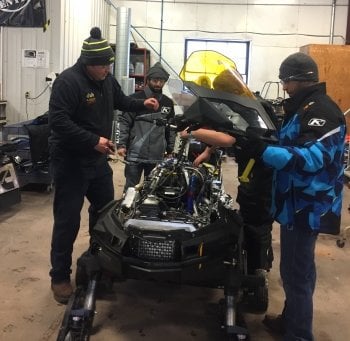
Students from Kettering University put the panels back on their snowmobile prior to the endurance run during the 2018 SAE International Clean Snowmobile Challenge.
Munkaila Musah photo.
Lee Knoll, operations director at the engineering company AVL, has been helping students test their snowmobiles at the competition for three years.
“The ‘dyno’ (dynamometer) gives the torque measurement, which is the physical measurement that enables the calculation of the engine’s horse power, which participants need to be within a specified range,” Knoll says. “The tail pipe emissions are taken and sampled for particulates and emissions—nox (nitrous oxide), carbon monoxide, carbon dioxide, among others. What comes out of the tail pipe must be as clean as possible, according to certain parameters, which is the main goal of the Clean Snowmobile Challenge.”
Michigan Tech: A Place for Engineering and Snow
The Michigan Tech team was challenged by the Yamaha Motor Corporation to reduce the existing noise level of a 2015 Yamaha Venture-RS sled by two decibels. Anthony Rettig, a fifth-year mechanical engineering student and member of the Michigan Tech team, expressed his endless joy for being part of this challenging project that gives students the opportunity to work on real industry equipment and solve real-world problems.
“It is a good opportunity because Professor Jason Blough is our advisor and he allows us to get hands-on experience by using expensive equipment that costs twice our daily budget—a rare opportunity for many students in this field,” Rettig says.
The intent of the Clean Snowmobile Challenge is to develop a snowmobile that is acceptable for use in environmentally sensitive areas, such as national parks or other pristine areas, as well as formulate novel solutions to maintain a snowmobile’s performance with less cost. The byproduct of this event is bringing students, industry, experts and the public together to bridge communities in a meaningful engineering project. Congratulations to all participants of the 2018 SAE International Clean Snowmobile Challenge!
2018 Team Awards
With myriad tests, there are many awards provided by industry partners in the challenge.
Overall in the gasoline category: Kettering University ($1,000 from International Snowmobile Manufacturers Association); University of Minnesota - Duluth ($750 from American Council of Snowmobile Associations); University of Wisconsin – Madison ($500 from American Council of Snowmobile Associations)
Overall in the diesel category: University of Wisconsin – Platteville ($1,000 from Oshkosh); Kettering University ($750 from Cummins)
Other gasoline categories:
-
University of Wisconsin – Madison: Best Performance Winner (CAMSO) Camso Trac for 2019",Best Lab Emissions (AVL), Best Design Winner (Oshkosh)
- Ecole De Technologie Superieure: Lowest "In Service" Emissions (Sensors),
"Quietest Snowmobile Winner (PCB) Camso Trac for 2019," Best Engine Design (Mahle)
- Kettering University: Best Fuel Economy (Gage)
- University of Minnesota – Duluth: Most Practical Winner (BRC)
- University of Idaho: Best Acceleration (Woody's), Best Handling (Polaris), Best Value Award (Continental), CAN -DO E-Controls award (E Controls)
- University of Wisconsin – Platteville: CAN -DO E-Controls award (E Controls)
- Rochester Institute of Technology: Milwaukee Tool Special Award
- Ferris State: Rookie of the Year (HBPSI)
- Michigan Tech: Most Sportsmanlike Winner (AVL), Horiba "A Team in Need" - portable
5 gas analyzer
Other diesel categories:
- University of Wisconsin – Platteville: Best Lab Emissions Winner (AVL), Lowest "In Service" Emissions (Sensors), Best Design Winner (Cummins), Draw Bar Pull (KRC)
- Kettering University: Innovation (DENSO), CAN -DO E-Controls award (E Controls), Most Innovative Emissions Design (Faurecia)
- Ecole De Technologie Superieure: Quietest Snowmobile Winner (PCB) Camso Trac for 2019, Best Fuel Economy Winner (Gage) (tied)
- South Dakota School of Mines: Milwaukee Tool Special Award
- SUNY – Buffalo: Best Fuel Economy Winner (Gage) (tied)
Michigan Technological University is an R1 public research university founded in 1885 in Houghton, and is home to nearly 7,500 students from more than 60 countries around the world. Consistently ranked among the best universities in the country for return on investment, Michigan's flagship technological university offers more than 185 undergraduate and graduate degree programs in science and technology, engineering, computing, forestry, business, health professions, humanities, mathematics, social sciences, and the arts. The rural campus is situated just miles from Lake Superior in Michigan's Upper Peninsula, offering year-round opportunities for outdoor adventure.

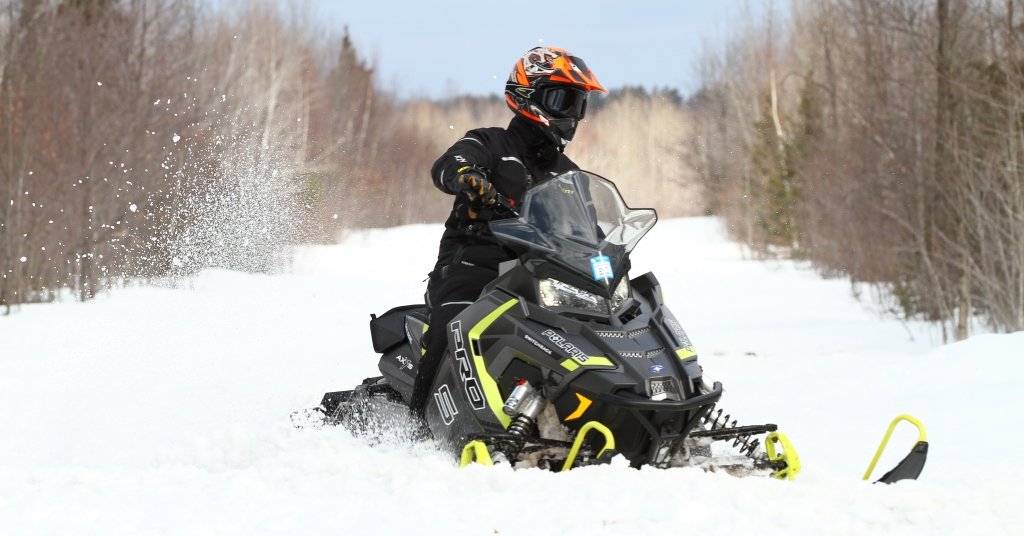
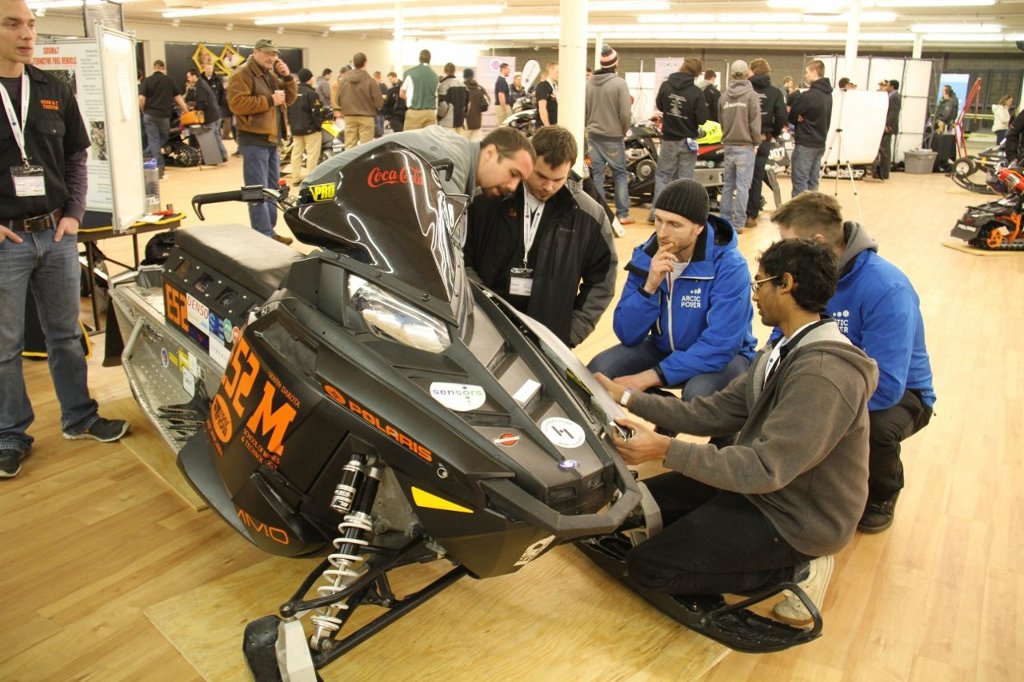
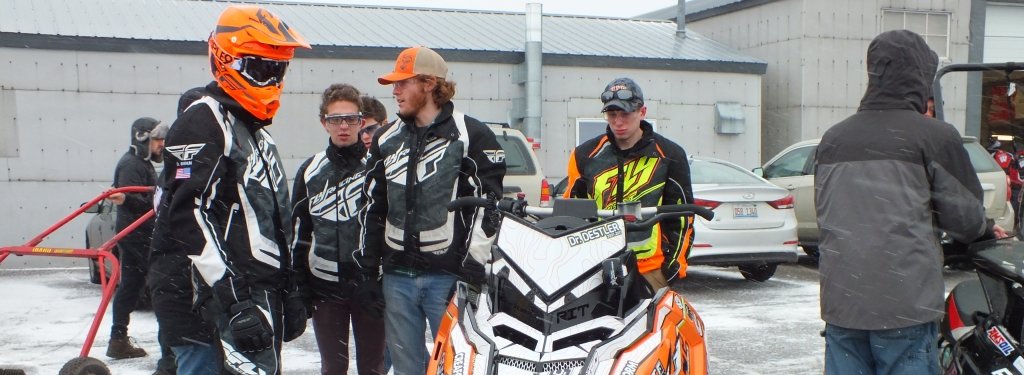
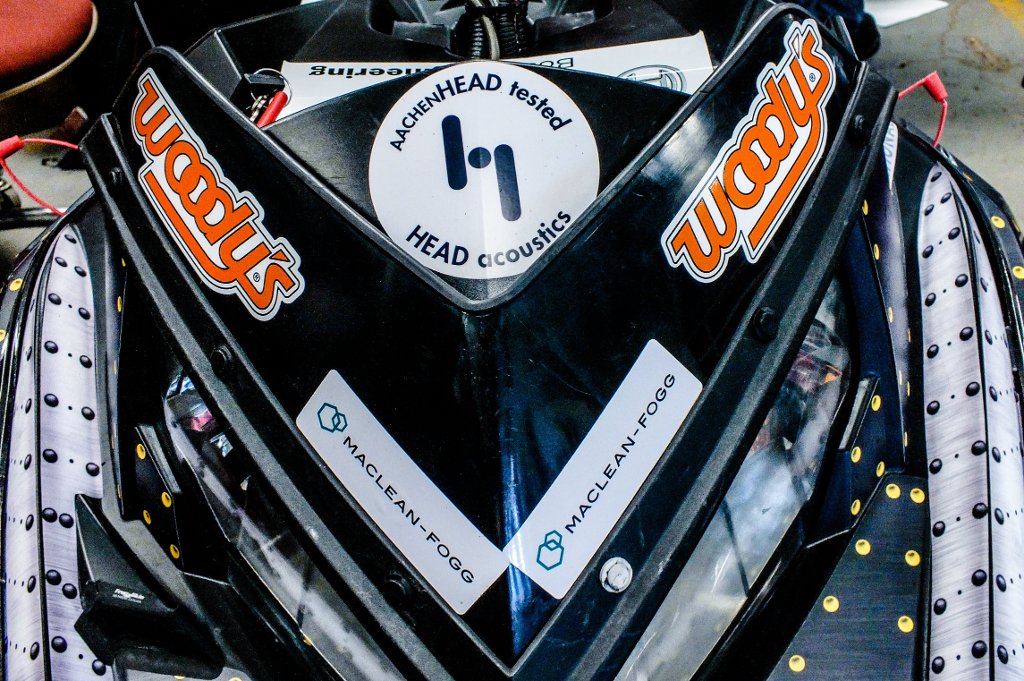
Comments